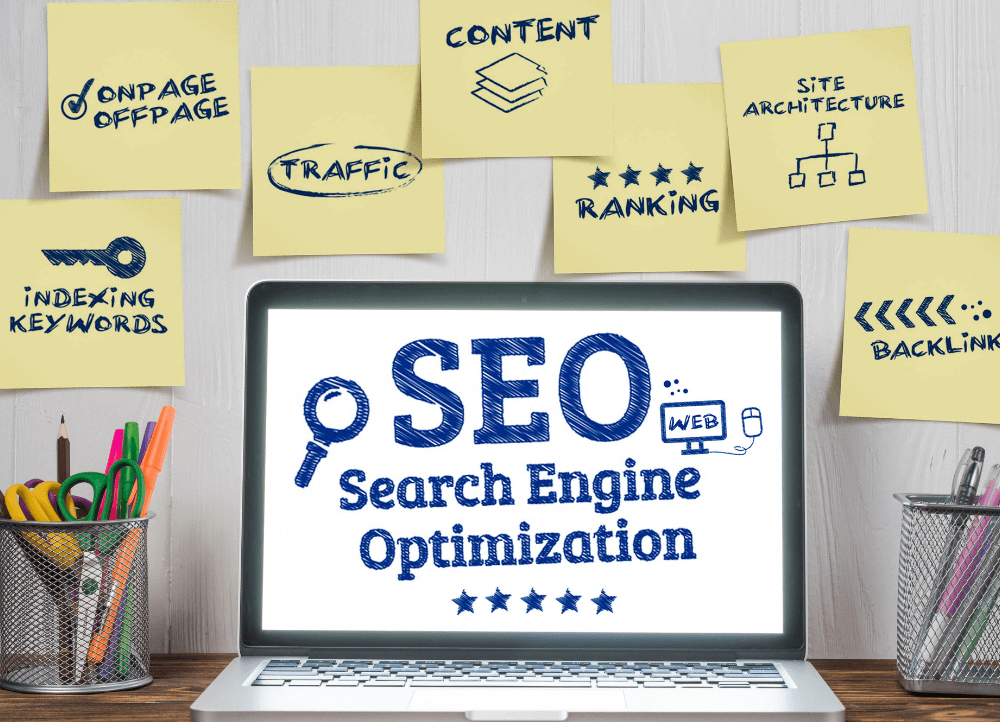Building in public isn’t just a trend—it’s a powerful way to support your business’s visibility online. Consistently sharing your process, progress, and setbacks can open up overlooked opportunities for SEO growth. When you involve your audience openly, you naturally generate fresh, relevant content that search engines reward.
By letting others see what’s happening behind the scenes, you attract genuine interest and build trust, encouraging backlinks and engagement without resorting to sales pitches. Your transparency can translate directly into higher authority and increased organic traffic.
Key takeaways
- Sharing your work publicly supports organic search growth.
- Transparent updates naturally attract backlinks and engagement.
- Building in public can boost your brand’s credibility and SEO performance.
What does building in public mean?

Building in public is a transparent approach where you share your works-in-progress, lessons, and failures openly online. By doing this, you foster genuine engagement, develop your online presence, and position yourself as approachable and trustworthy in public relations and content creation.
Origins and examples
The concept of building in public traces its roots to software development and startup communities. Founders and creators began sharing frequent updates on platforms such as Twitter, personal blogs, and newsletters. They posted real-time progress, tough decisions, and outcomes. A well-known example is Pieter Levels, who openly documents his product launches, mistakes, and earnings.
Another instance is companies like Buffer, which shares revenue dashboards and company policies for everyone to see. These practices give audiences exceptional access to a creator’s journey, resulting in deeper trust and stronger community bonds. You’ll find building in public through regular project roadmaps, transparent earnings reports, and candid updates. The format varies—from tweets with screenshots to vlog-style YouTube videos detailing daily operations.
How it differs from traditional content creation
Traditional content creation usually means producing polished materials, carefully crafted press releases, or well-edited blog posts before sharing them. The process is mostly hidden from public view, and updates are staged rather than spontaneous. With building in public, you share iterative progress, including unfinished work, failures, and experiments.
This method is less about perfection and more about showing the genuine development process. Followers expect candid moments and direct interaction—not just finished products. Sharing early drafts or prototype versions is encouraged, making the audience part of your journey. This approach can positively affect your online presence and public relations by establishing authenticity and encouraging ongoing engagement rather than one-time attention.
Direct SEO benefits of building in public

Publishing your progress openly can deliver measurable advantages for search engine optimization. As you share updates, you also create a steady stream of fresh content that impacts how search engines like Google and Bing treat your site.
Increased indexing speed
When you publish updates, insights, or even code snippets frequently, search engine spiders visit your site more often. This regular activity gives Google and Bing more reasons to crawl and index your pages quickly. Frequent updates signal to search engines that your website is active, reducing the lag between publishing and indexing.
Websites that show consistent activity get prioritized during crawl schedules. This means your new content, features, or announcements can appear in search engine results pages (SERPs) faster than less active competitors. Accelerated indexing becomes particularly valuable for time-sensitive topics or launches, increasing your opportunity to capture early organic traffic.
Enhanced organic visibility
Sharing the development process publicly increases your keyword footprint naturally. Each update—whether it’s a sprint recap, a milestone, or a microblog—introduces new phrases, questions, and answers relevant to your niche. Over time, this expands the range of search queries for which your site can appear in SERPs.
Key benefits of this ongoing content include:
- Capturing long-tail keywords as you answer real user questions.
- Ranking for trending topics within your field based on timely updates.
- Building topical authority, which is recognized by search algorithms.
A broader ranking footprint translates into higher overall visibility in search engines.
Faster search engine ranking improvements
As you build in public, you attract engagement from other creators, followers, and niche communities. This increases the chance of earning organic backlinks, mentions, or social shares. Since quality backlinks remain a strong ranking factor, this exposure can directly boost your search engine rankings.
Engagement also drives user interaction metrics like on-page dwell time and repeat visits. Both factors signal content relevance and quality to search engines like Google. Ranking improvements for newly published content may occur more quickly thanks to these combined signals, giving your site a competitive SEO advantage.
Boosting backlinks and link equity through transparency

Sharing your progress in public opens doors to natural backlink opportunities, strengthens your link equity, and builds a reputation for trust. This strategy also helps position your content for higher search visibility by encouraging meaningful interactions from high domain authority sites.
Attracting high-quality backlinks
Transparency in your building process makes your project a reliable source for others seeking real-world examples. Marketers, journalists, and bloggers are more likely to link back to open and authentic case studies or progress updates, considering them credible references. You increase your chances of attracting high-quality backlinks when you document challenges, share data, and reveal behind-the-scenes operations honestly.
These backlinks often come from websites with high domain authority, which pass valuable link equity, sometimes referred to as “link juice,” to your site. For SEO, a few editorial links from respected sources are often more impactful than dozens from low-quality domains. Link building becomes less about outreach and more about sharing updates that others want to cite. By being open, your content can be linked naturally as a resource, which is more sustainable over time.
Maximizing referral traffic
When you document in public, your transparency becomes a magnet for referral traffic from other blogs, forums, and news outlets. Shared updates on progress, milestones, or transparent failures often get referenced in newsletters, industry digests, and summary articles, driving targeted visitors back to your site. Unlike organic search traffic, referral visitors already have context and intent because they found your content through related conversations or curated sources.
Well-placed backlinks on authoritative sites not only aid SEO but send motivated traffic with a genuine interest in your project. Tracking your referral sources helps you measure which public updates or case studies are resonating most. Tools like Google Analytics, Ahrefs, or SEMrush can help monitor incoming referral traffic and correlate it to specific transparent content.
Building trust and authority
Transparency in public building establishes your site as credible within your niche. When reputable domains cite your work, search engines interpret this as a vote of trust, positively affecting your authority and PageRank. You signal reliability when you document mistakes, experiments, and learnings with specific details.
Consistently open communication also encourages authoritative sites to link to you, as trustworthy sources prefer referencing transparent, up-to-date information. A combination of trust, authentic content, and editorial backlinks enhances your perceived expertise both to users and search engines. Additionally, optimizing for trust decreases the chance that high-value links use the “nofollow” attribute, ensuring your site receives maximal link equity benefits.
Content creation and on-page SEO strategies

Producing and refining content directly impact your website’s visibility and search rankings. Effective strategies not only attract users but also align with important on-page SEO factors such as meta descriptions, copywriting, and continual optimization.
Sharing high-quality content regularly
Consistently publishing high-quality content is essential for sustained growth in search rankings. You should aim to provide original insights that address your audience’s real questions and problems. Well-researched, timely posts build authority while keeping users engaged. Consider a content calendar for planning regular updates.
Publishing on a fixed schedule signals to search engines that your site is active and relevant. This can lead to more frequent crawling and better indexing, both important for website optimization. Remember to update or expand older high-performing content with new data or perspectives. Regular revisions improve accuracy and signal ongoing value to both users and search engines.
Optimizing meta descriptions and on-page elements
Meta descriptions directly affect how your site appears in search results. These should accurately summarize each page, include relevant keywords, and remain under 160 characters for best display.
Checklist for meta description optimization:
- Clearly describe page content
- Use a primary keyword without overstuffing
- Aim for an engaging but factual tone
- Avoid generic phrases like “click here”
Besides meta descriptions, attention to on-page SEO includes optimizing headings, image alt text, internal links, and mobile responsiveness. Clear headings (H1, H2, H3) help both users and search engines understand your content structure. Use keyword variations naturally to avoid keyword stuffing while reinforcing your topic.
Leveraging SEO copywriting
SEO copywriting is about balancing search optimization with user engagement. Use keywords thoughtfully to target what users search for—but keep sentences readable and informative. Short sentences, bullet lists, and clearly stated facts aid comprehension and reduce bounce rates.
Integrate internal links to guide visitors to related topics, offering more value and supporting deeper site navigation.
Tools such as Grammarly, Hemingway, or SurferSEO can help you maintain clarity and appropriate keyword density. Always review your content for accuracy and usefulness before publishing to support long-term authority in your niche.
Improving brand authority and organic traffic

Building in public helps your brand gain credibility and trust while also enhancing search engine visibility. When you work transparently, audiences are more likely to engage, and search algorithms favor sites that deliver clear value.
Building brand authority with transparency
Transparency is a concrete way to establish brand authority online. By sharing your wins, lessons, and even mistakes in real time, you provide actual proof of expertise instead of only claiming it. Openly documenting processes—like launching a new product or updating a service—shows you have confidence in your brand. This attracts attention from relevant audiences, niche communities, and even industry experts, who may reference or link to your content.
Examples of authority signals from transparency:
- Public roadmaps
- Open progress updates
- Honest reflections on what worked and what didn’t
These signals are indexed by search engines and contribute to higher relevance and trust, which are both ranking factors in organic search. Over time, transparency naturally leads to more backlinks and citations, further strengthening your brand’s authority in search results.
Increasing user engagement and experience
When you share openly, users feel directly involved in your journey. You’re not just talking at visitors—you’re building a relationship. This approach often leads to return visits, more time spent on your site, and shares on social media or through word of mouth. A site with active comment sections, regular updates, and meaningful interactions increases engagement metrics. These signals, such as low bounce rate and higher dwell time, are taken into account by search engines.
Some ways to create strong engagement include:
- Responding to comments and feedback
- Sharing user stories and testimonials
- Updating content based on audience input
Improved engagement and user experience can drive higher rankings in organic search, directly impacting your website traffic.
Driving long-term organic traffic
Publishing in public isn’t a one-time boost. Consistently sharing progress and updates creates a steady stream of fresh content. Search engines prioritize regularly updated websites with relevant, timely information. Older milestones, learning processes, and progress logs become evergreen assets. They attract new users long after being published, as many search queries relate to hands-on experiences.
Key drivers of long-term organic search relevance:
| Action | Benefit |
|---|---|
| Frequent updates | More indexed content |
| Detailed case studies | Increased keyword relevance |
| Community feedback integration | More authority in your niche |
Long-term transparency ensures that your site continues to grow in organic traffic as it builds a rich archive of valuable, searchable resources.
Building in public as a marketing strategy

Building in public can strengthen your digital marketing efforts, expand your brand reach, and generate measurable SEO results. By taking a transparent approach, you attract attention from both your community and external partners, ultimately supporting revenue growth.
Integrating building in public with digital marketing
When you share updates about your company’s growth, product development, or challenges, you provide authentic content that audiences can follow over time. This ongoing narrative creates a steady stream of material for blogs, newsletters, and social channels. Such transparency increases your brand’s credibility and builds strong engagement.
These updates serve as touchpoints that amplify your existing digital marketing strategies and position your brand as an industry thought leader. Consider incorporating building-in-public content into your editorial calendar. Schedule product milestones, lessons learned, and behind-the-scenes posts alongside traditional campaigns. This integrated approach strengthens both your content marketing and your connection with potential customers.
Leveraging outreach and press releases
Sharing progress publicly often attracts media outlets, bloggers, and industry peers interested in your journey. When journalists pick up your story, you can reach new audiences and gain high-quality backlinks. Drafting targeted press releases about milestones — such as product launches or funding rounds — helps secure additional coverage.
Use media lists and outreach platforms for distribution to relevant journalists and blogs. Building relationships with digital outlets through transparent progress updates increases the likelihood that you’ll be featured in articles and interviews. Press mentions boost your search engine standing by increasing domain authority and generating organic traffic to your website.
Using analytics to measure SEO impact
Monitoring the results of building in public is crucial for understanding its impact on SEO. Google Analytics and similar tools let you track traffic changes, keyword rankings, and referral sources tied to public updates.
Focus on key performance indicators (KPIs) such as:
- Number of backlinks generated from press mentions
- Growth in branded searches
- Referral traffic from outreach campaigns
Analyze which types of updates bring the most site visits, engagement, and conversions. Use this data to refine future content and ensure that your building-in-public strategy aligns with SEO objectives.
Contributing to revenue growth
Increased visibility from building in public can directly affect your bottom line. Transparent sharing tends to shorten the trust-building phase for prospects, supporting faster sales cycles. As more users discover your brand through search or media coverage, organic leads rise.
These leads typically arrive with greater awareness and intent, having already followed your public progress. Measurable SEO improvements — higher rankings and more backlinks — drive sustained website traffic. This ongoing stream of qualified visitors supports both short-term sales targets and long-term revenue growth.
A more detailed look at how public building supports revenue is summarized below:
| Building-in-Public Activity | Revenue Benefit |
|---|---|
| Frequent updates | Increased site traffic |
| Media features | Brand trust, sales lift |
| Transparency on challenges | Higher customer loyalty |
Boost SEO by building in public — hire fractional content experts from Quickly Hire
Building in public isn’t just a trend—it’s a powerful way to support your business’s visibility online. Consistently sharing your process, progress, and setbacks can open up overlooked opportunities for SEO growth. When you involve your audience openly, you naturally generate fresh, relevant content that search engines reward.
By letting others see what’s happening behind the scenes, you attract genuine interest and build trust, encouraging backlinks and engagement without resorting to sales pitches. Your transparency can translate directly into higher authority and increased organic traffic.
Need help crafting your build-in-public strategy?
Hire vetted fractional content creators and SEO specialists from Quickly Hire to turn transparency into traction.
